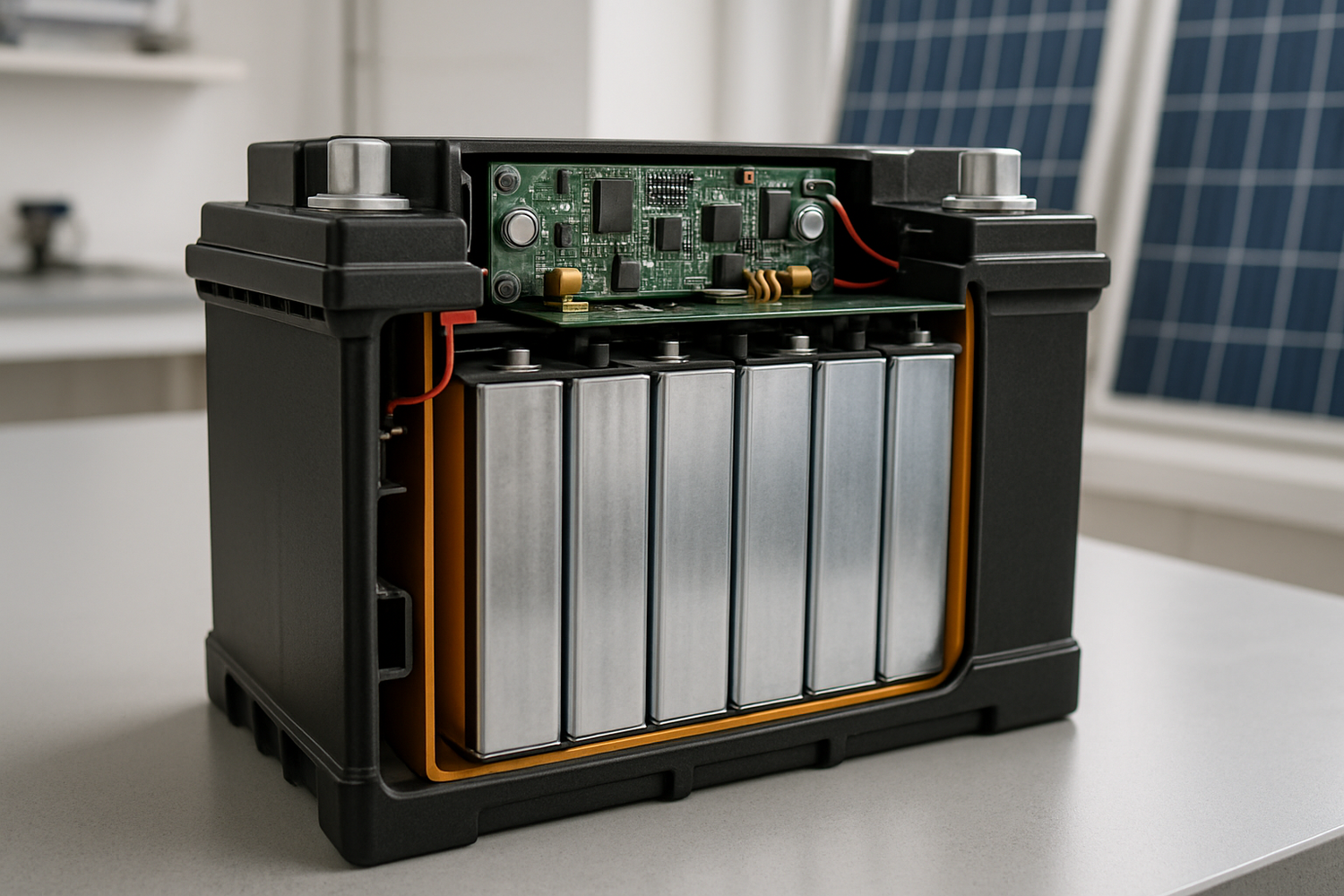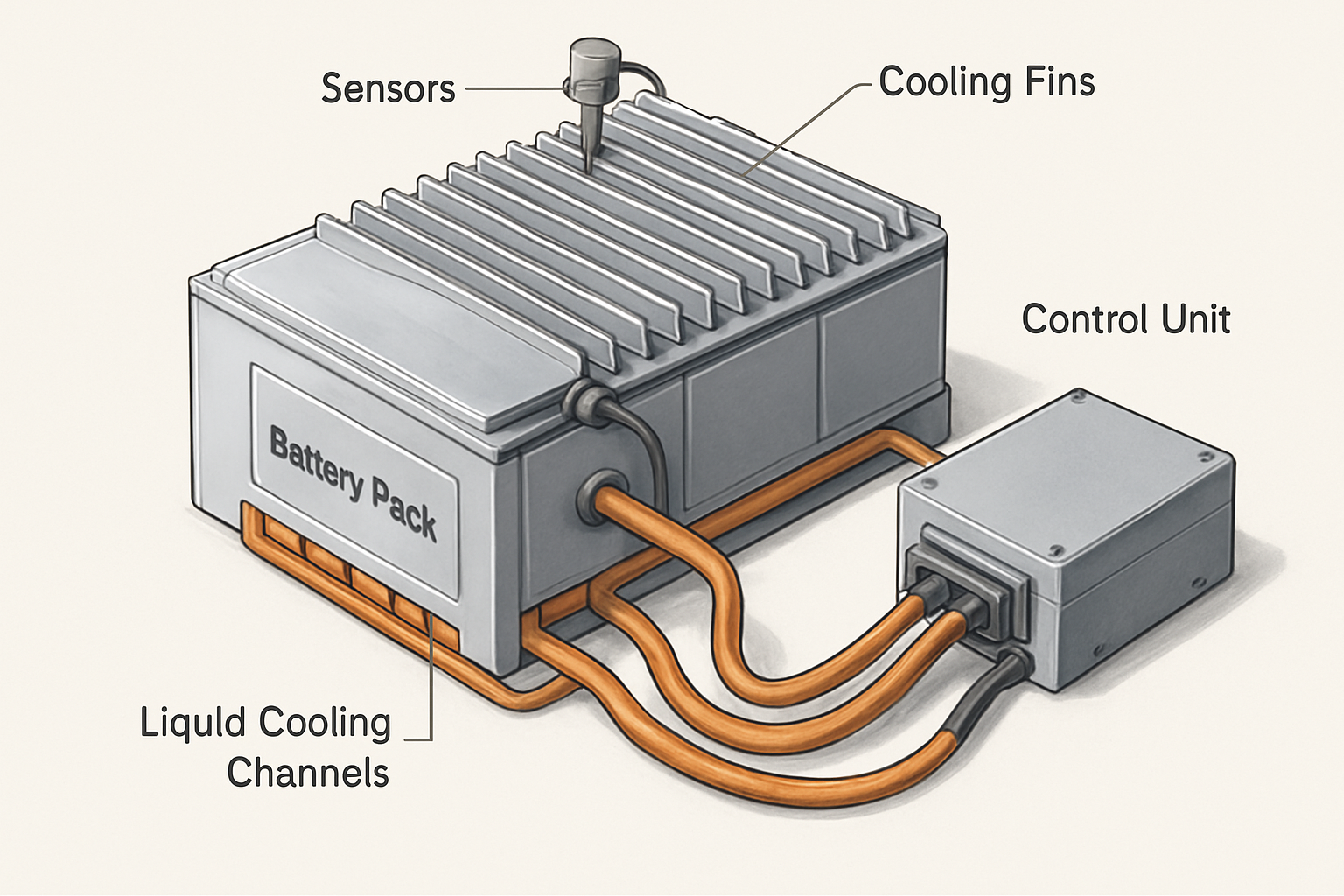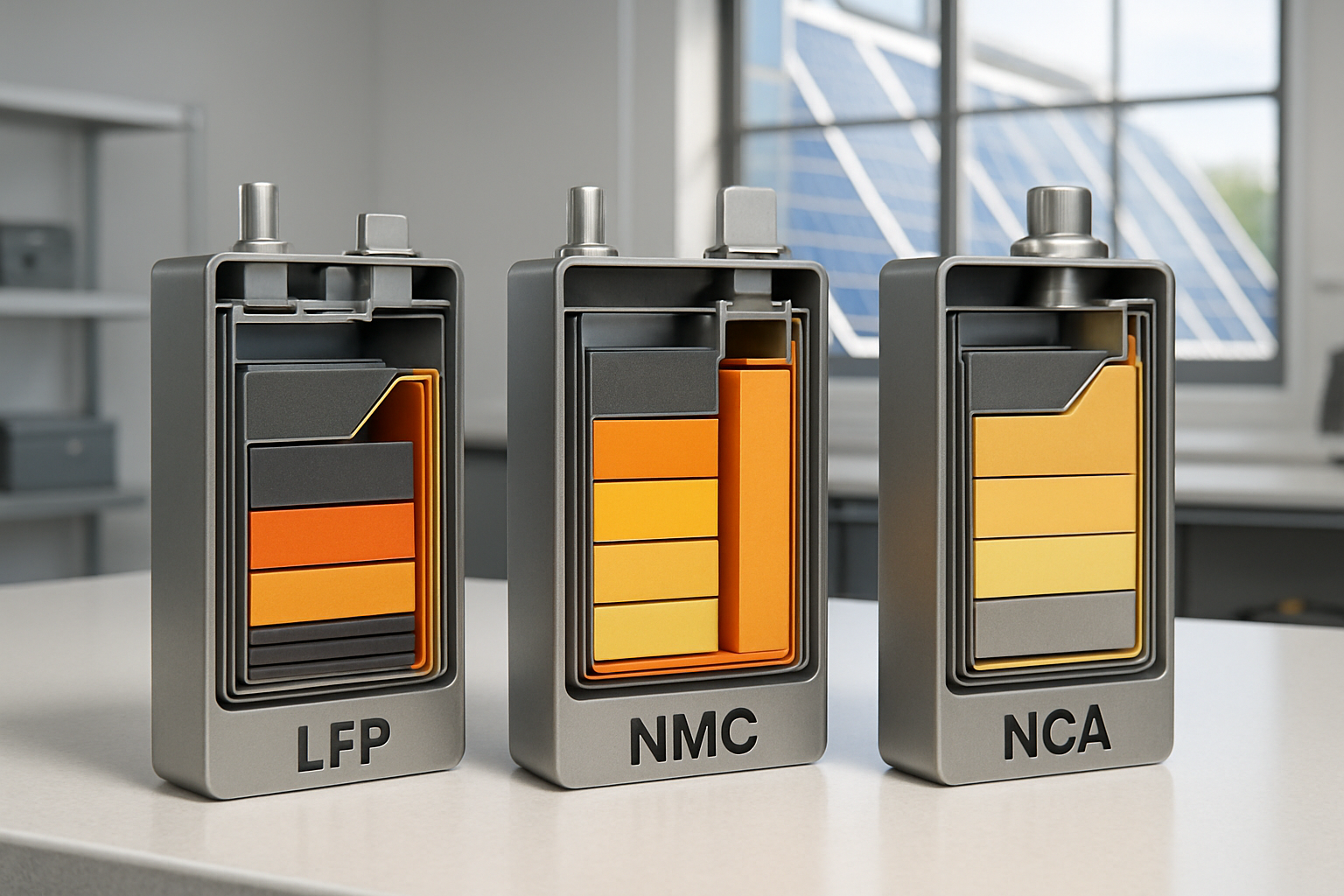Selecting the right deep cycle battery is fundamental to building a reliable energy storage system. With various technologies available, deep cycle lithium batteries have emerged as a leading choice for solar, off-grid, and recreational applications. Their performance and longevity offer significant advantages. This overview covers the five most important factors to consider, empowering you to choose a battery that aligns with your energy goals.
Understanding Lithium-Ion Chemistries
The term 'lithium-ion' refers to a family of battery types, each with unique characteristics. The specific chemistry of a battery's cathode material is a primary determinant of its performance, safety, and lifespan. Making an informed choice starts with understanding these differences.
The Rise of Lithium Iron Phosphate (LiFePO4)
Among the available lithium-ion technologies, Lithium Iron Phosphate (LiFePO4) stands out for stationary energy storage. Its molecular structure is exceptionally stable, making it highly resistant to thermal runaway and enhancing its safety profile. LiFePO4 batteries provide a long cycle life and consistent power output. A report from the IEA, Energy Technology Perspectives 2024, notes that regions with access to the raw materials for LiFePO4 chemistries can produce them more cost-effectively, contributing to their growing adoption.
Comparing LiFePO4 with Other Chemistries
Other common chemistries include Lithium Nickel Manganese Cobalt Oxide (NMC) and Lithium Cobalt Oxide (LCO). While these are prevalent in portable electronics and electric vehicles due to their higher energy density, their suitability for home energy storage is different. As highlighted in the IEA's analysis, The Role of Critical Minerals in Clean Energy Transitions, the combination of minerals gives rise to significantly different battery characteristics. For deep cycle applications where safety and a long service life are paramount, LiFePO4 is often the superior choice.
| Feature | LiFePO4 (LFP) | NMC | LCO |
|---|---|---|---|
| Cycle Life | 3,000 - 6,000+ cycles | 1,000 - 2,000 cycles | 500 - 1,000 cycles |
| Safety | Excellent | Good | Fair |
| Thermal Runaway Temp. | ~270°C (518°F) | ~210°C (410°F) | ~150°C (302°F) |
| Nominal Voltage | 3.2V | 3.6V / 3.7V | 3.7V |
| Primary Use Case | Energy Storage, Off-Grid | EVs, Power Tools | Consumer Electronics |
Evaluating Battery Performance Metrics
Beyond chemistry, specific performance metrics quantify a battery's capabilities. Understanding these figures helps you match a battery to the demands of your application, ensuring it delivers reliable power when you need it most.
Capacity and Depth of Discharge (DoD)
Capacity, measured in Amp-hours (Ah), indicates how much charge a battery can hold. A 100Ah battery can theoretically supply 100 amps for one hour. Equally important is the Depth of Discharge (DoD), which is the percentage of the battery's total capacity that can be safely used. LiFePO4 batteries excel with a DoD of 80-100%, whereas traditional lead-acid batteries are often limited to 50% to avoid damage. According to a report by IRENA, Innovation Outlook: Smart charging for electric vehicles, a high tolerance for deep discharge is necessary for applications like balancing renewables.
Cycle Life and Longevity
Cycle life is the number of charge and discharge cycles a battery can endure before its capacity degrades to a specific percentage of its original rating (typically 80%). A high-quality LiFePO4 battery can deliver thousands of cycles, translating to a service life that can exceed a decade. This longevity makes the upfront investment highly economical over the battery's lifespan compared to technologies that require more frequent replacement.
The Importance of the Battery Management System (BMS)
The Battery Management System (BMS) is the intelligent component within a lithium battery pack. It is not an optional extra; it is a critical feature that ensures safety, optimizes performance, and maximizes the battery's operational life.
Core Functions for Safety and Performance
A sophisticated BMS actively monitors and manages the battery's state. Its primary responsibilities include preventing conditions that could harm the battery or create a safety hazard. Key protective functions include:
- Over-Charge Protection: Stops charging when the battery reaches full capacity.
- Over-Discharge Protection: Disconnects the load to prevent draining the battery too far.
- Temperature Protection: Monitors cell temperature and prevents charging or discharging in extreme conditions.
- Short-Circuit Protection: Instantly disconnects the battery to prevent catastrophic failure.
- Cell Balancing: Ensures all individual cells within the battery pack maintain an equal state of charge, which is vital for achieving maximum capacity and lifespan.
Physical and Environmental Considerations
The physical attributes of a battery and its environmental tolerance are practical factors that influence installation and use. These aspects are particularly relevant in mobile applications or installations with space constraints.
Size, Weight, and Energy Density
Energy density refers to the amount of energy stored per unit of volume or mass. Lithium-ion batteries possess a much higher energy density than older technologies. The IEA states that while lead-acid batteries have specific energies of 35-40 Watt-hours per kilogram (Wh/kg), lithium-ion batteries range from 90–260 Wh/kg. This means a LiFePO4 battery can offer the same usable energy as a lead-acid battery at roughly half the weight and in a smaller package.
Operating Temperature Range
LiFePO4 batteries operate efficiently across a wide range of temperatures. However, a critical limitation is charging below freezing (0°C or 32°F), which can cause permanent damage. A quality BMS will include low-temperature protection that automatically prevents charging in these conditions, safeguarding your investment.
System Integration and Scalability
A battery is one component of a larger energy system. Ensuring it integrates seamlessly with other parts, like solar charge controllers and inverters, is essential. It is also wise to plan for potential future energy needs.
Ensuring Compatibility with Your System
Verify that the battery's nominal voltage (e.g., 12V, 24V, or 48V) matches your system's requirements. For advanced setups, check for communication compatibility between the battery's BMS and your inverter, which can enable more intelligent system operation and monitoring.
Planning for Future Expansion
LiFePO4 batteries are well-suited for scalable systems. You can typically connect multiple batteries in series to increase voltage or in parallel to increase capacity. When expanding, it is recommended to use batteries of the same model, capacity, and age to ensure balanced performance. For a detailed analysis of how batteries function within a complete setup, the Ultimate Reference for Solar Storage Performance offers valuable data on system design and efficiency.
A Final Perspective
Choosing the right deep cycle lithium battery involves a careful evaluation of its chemistry, performance metrics, BMS capabilities, physical design, and compatibility with your system. By prioritizing LiFePO4 technology for its safety and longevity, and by selecting a battery with a robust BMS, you build a foundation for a resilient and efficient energy storage solution. This thoughtful approach helps you move closer to achieving reliable, long-term energy independence.
Disclaimer: The information provided in this article is for educational purposes only. It is not intended as financial or legal advice. Please consult with a qualified professional before making any investment decisions or implementing any energy system.
Frequently Asked Questions
What makes LiFePO4 safer than other lithium chemistries?
The safety of LiFePO4 is rooted in its strong covalent bond between the phosphorus and oxygen atoms in its cathode material. This structure is more stable and less prone to releasing oxygen during overcharging or overheating, which is the primary cause of thermal runaway in other lithium-ion chemistries.
Can I replace my lead-acid battery directly with a deep cycle lithium battery?
In many cases, yes. A LiFePO4 battery of the same voltage can often serve as a drop-in replacement. However, you must ensure your charging system (e.g., alternator, solar charge controller, or converter) has a setting compatible with the lithium charging profile. Using an incorrect charging profile can reduce performance and lifespan.
How do I calculate the battery capacity I need?
To determine your required capacity, first list all the electrical devices you plan to power. For each device, find its power consumption (in watts) and estimate how many hours per day you will use it. Multiply watts by hours to get watt-hours (Wh) per day for each device. Sum the Wh for all devices to get your total daily energy requirement. Finally, divide the total Wh by the battery's voltage (e.g., 12V) to find the required Amp-hours (Ah).
What is the expected lifespan of a LiFePO4 battery?
The lifespan of a LiFePO4 battery is typically measured in charge cycles and can also be influenced by factors like operating temperature and depth of discharge. A high-quality LiFePO4 battery is often rated for 3,000 to 6,000 cycles. With one cycle per day, this can translate to a service life of 10 to 15 years or more, far exceeding that of traditional batteries.





Leave a comment
All comments are moderated before being published.
This site is protected by hCaptcha and the hCaptcha Privacy Policy and Terms of Service apply.